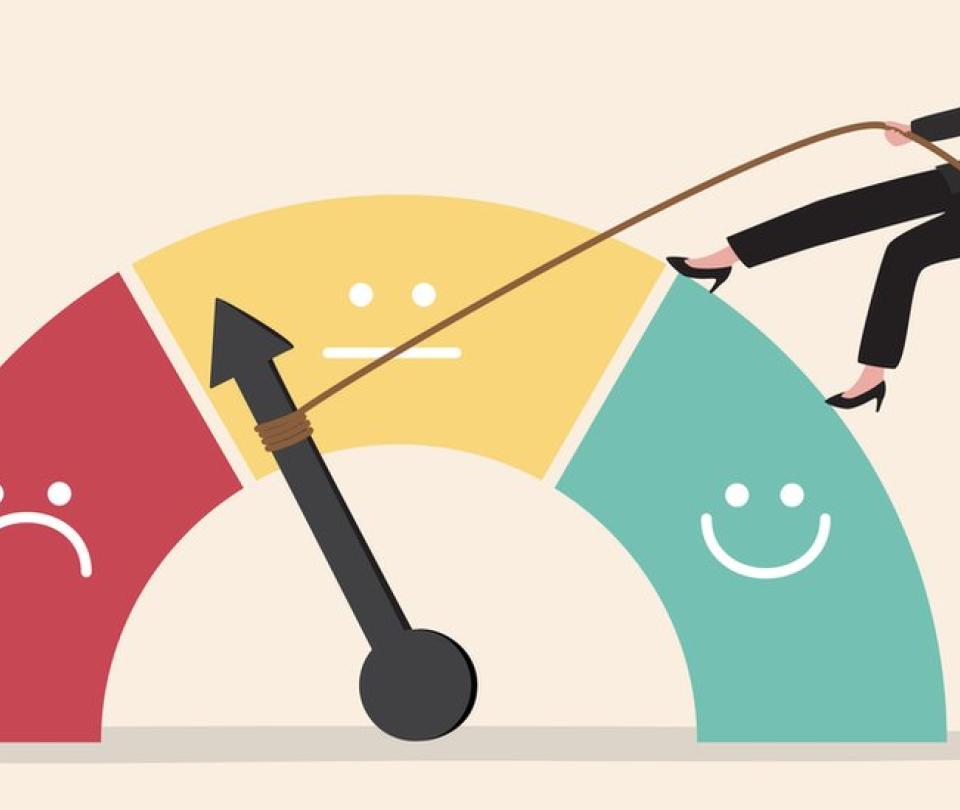There are three numbers that in the United States can mark your personal economy and even the one that your children will have.
The so-called credit score is an indicator that goes from 300 to 850 and is used to estimate your level of financial solvency.
Determine if you can get a loan, a credit card or a mortgage, and even the price of your car insurance or the amount of the security deposit you will have to give when renting a home.
In the event that it is established that you will actually be granted that mortgage or that credit, the credit score will also serve to define the price that it will cost you, established through the interest rate.
The differences can be brutal.
In the current conditions of the US economy, in general the interest rates of a loan can range from little more than 5% to more than 35%. And, to a large extent, what decides which one will correspond to you is your credit score. The lower it is, the higher the rate; the higher, the lower.
“The impact of the credit score on life in the United States is simply astronomical,” says Nicholas Schmidt, director of Technology and Innovation at SolasAI, a company dedicated to detecting and mitigating potential patterns of discrimination in the algorithms used by financial institutions. when evaluating credit applications.
“This indicator not only affects whether or not you will receive a loan, but also other things such as whether you will be able to rent or buy a home. The problem of not having a good credit score can be catastrophic in many areas of your life,” he adds in conversation with BBC World.
David Silberman, who worked for a decade at the Consumer Financial Protection Office (CFPB), explains to BBC Mundo that from the perspective of a homeowner it makes sense to take this solvency indicator into account. when deciding whether to rent your property and the amount of deposit to request from the tenant.
As for the use of credit scores to set the price of car insurance, it is a more complex matter.
“For reasons we don’t fully understand, there is a strong correlation between credit score and the frequency with which auto loss reports are made. On the other hand, there is no other good data that tells the company if it is more or less less likely that you’re a bad driver, and insurers are trying to figure out what the risk is that you’ll actually end up in an accident and they’ll have to pay for damages,” says Silberman, who is now a senior counsel at the Center for Responsible Lending, an NGO dedicated to the financial education of citizens.
The expert ensures that the differences between a good or bad credit score are clear.
“With a score of 500 it’s going to be almost impossible for you to get anyone to give you credit, except for an extremely expensive lender. That means it’s going to be very difficult to buy a house or a car that you might need to go to work “, indicates.
The credit score began to be established in the United States during World War II, when the banks were left without enough qualified personnel to evaluate the creditworthiness of credit applicants.
So, a kind of points card was created that allowed non-specialized employees -who followed very precise instructions- to decide on the approval of the requests.
In the mid-1950s, this method was converted by the Fair Isaac Company (FICO) into a standard statistical instrument. Currently there are several indicators of this type, but the FICO is by far the most used in the US.
This is calculated using different factors such as your payment history, the amounts you owe, the time your credit history has, new credit applications and the type of credit you have (if it is only credit cards or if You also have installment loans such as a mortgage, the purchase of a car, etc.).
Each of these factors is given a different weight in the calculation, with payment history being the most important.
The adoption of this type of credit indicator was considered an advance, since it established objective parameters for the granting of credit instead of the demographic characteristics of the applicant that were previously used.
“The alternative was to let people make subjective judgments about who could be given a loan and how much they should be charged. And there are many reasons to think that those judgments can be highly biased. The credit score, at least, is one an objective way of measuring risk that is also efficient because it allows you to make a decision quickly since you have instant access to information,” says Silberman.
But this mechanism also has its downside.
“The main disadvantage is that it perpetuates the discrimination of the past, racism and inequalities in our society,” warns the expert.
He explains that, for example, parents with financial resources can help their children obtain their first loans and build a good credit score, helping them financially if they are in financial trouble to avoid these being reflected in this indicator.
“Those who aren’t in that situation are going to start building their credit history later, have to work harder, and have a lower score. So you end up having a huge disparity between whites and blacks; between whites and Latinos, which perpetuates inequalities for the future,” he says.
A study carried out in 2022 found that those who obtained their first credit card between the ages of 18 and 20 with their parents as co-signers had, by the time they turned 30, a credit score that, on average, was 29 points higher than those young people who obtained the cards for themselves and 55 points to those who built their credits in other ways.
On the FICO scale (from 300 to 850), a score between 670 and 739 is considered “good.”
Data from the payment company Shift Processing, corresponding to 2021, indicate that the average credit score of the white population in the United States is 734, while that of African-Americans is 677. In the case of Hispanics it stands at 701.
In general, this system tends to offer better credit conditions to those with higher scores.
In addition, when assigning a score, the system takes into account not only your data but also what has been the historical behavior in credit matters of people who have data similar to yours.
Nicholas Schmidt explains that the credit score significantly affects immigrants.
“One of the characteristics of the credit score is that it needs to have enough data about you to assign you a score. So, for example, if you recently immigrated to the US, there is no information about you and the algorithm knows nothing. It could be that you are someone who has always paid their debts, but since there is no data about you in this country, you cannot be scored and the system interprets you the same as other people who do not have a credit history, which can be very unfair “he points.
Explain that this problem can be corrected over time, as the person builds their credit history, obtains loans, credit cards, and pays their bills.
“So the system can offer a fairer score, although because it works with historical data, it necessarily incorporates some of the biases and historical discrimination that has occurred in the United States,” he says.
“But for that there is no easy solution,” he warns.
Remember that you can receive notifications from BBC Mundo. Download the new version of our app and activate them so you don’t miss out on our best content.






![[Img #74675]](https://thelatestnews.world/wp-content/uploads/2024/12/They-discover-a-new-class-of-X-ray-sources-in-the-150x150.jpg)




